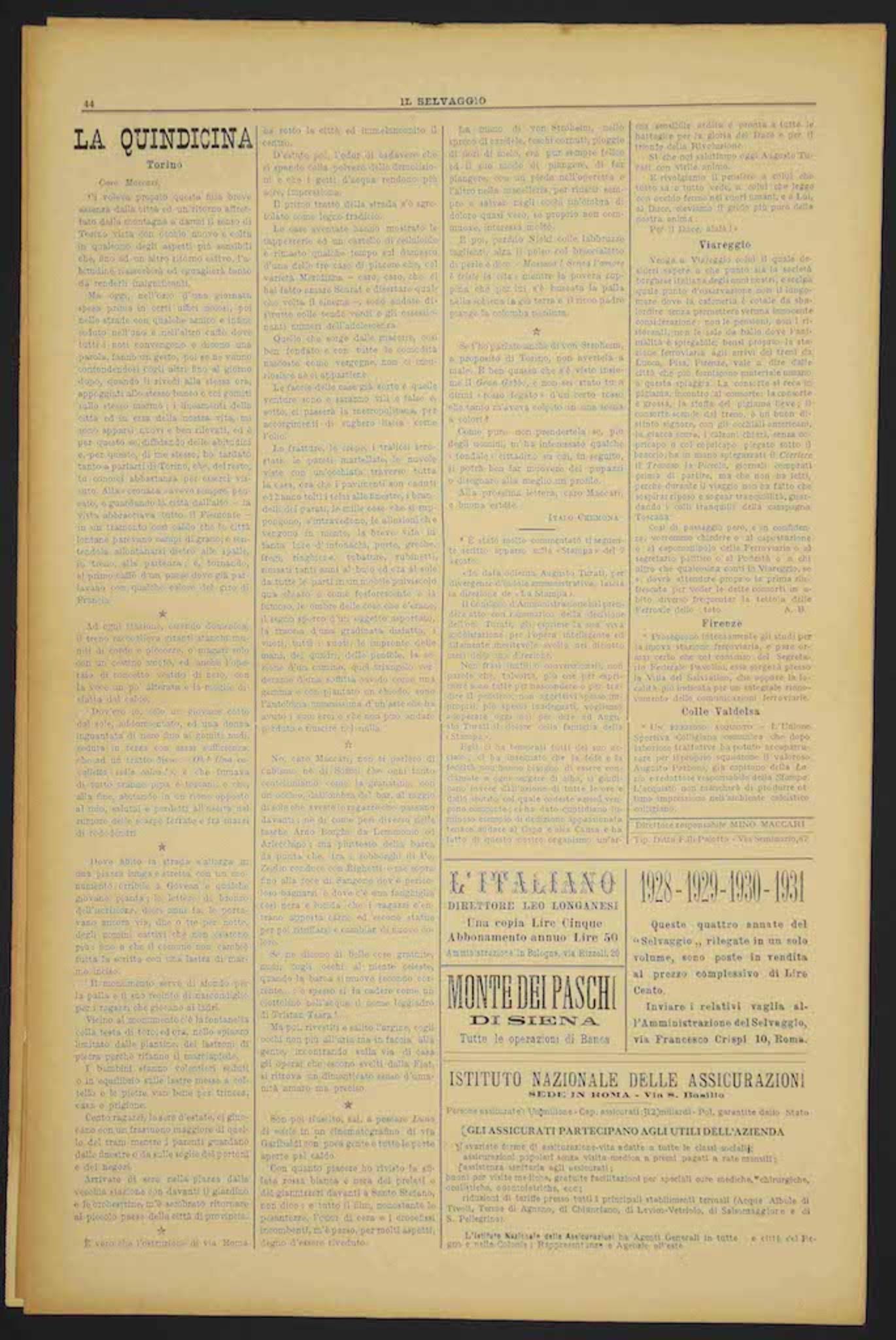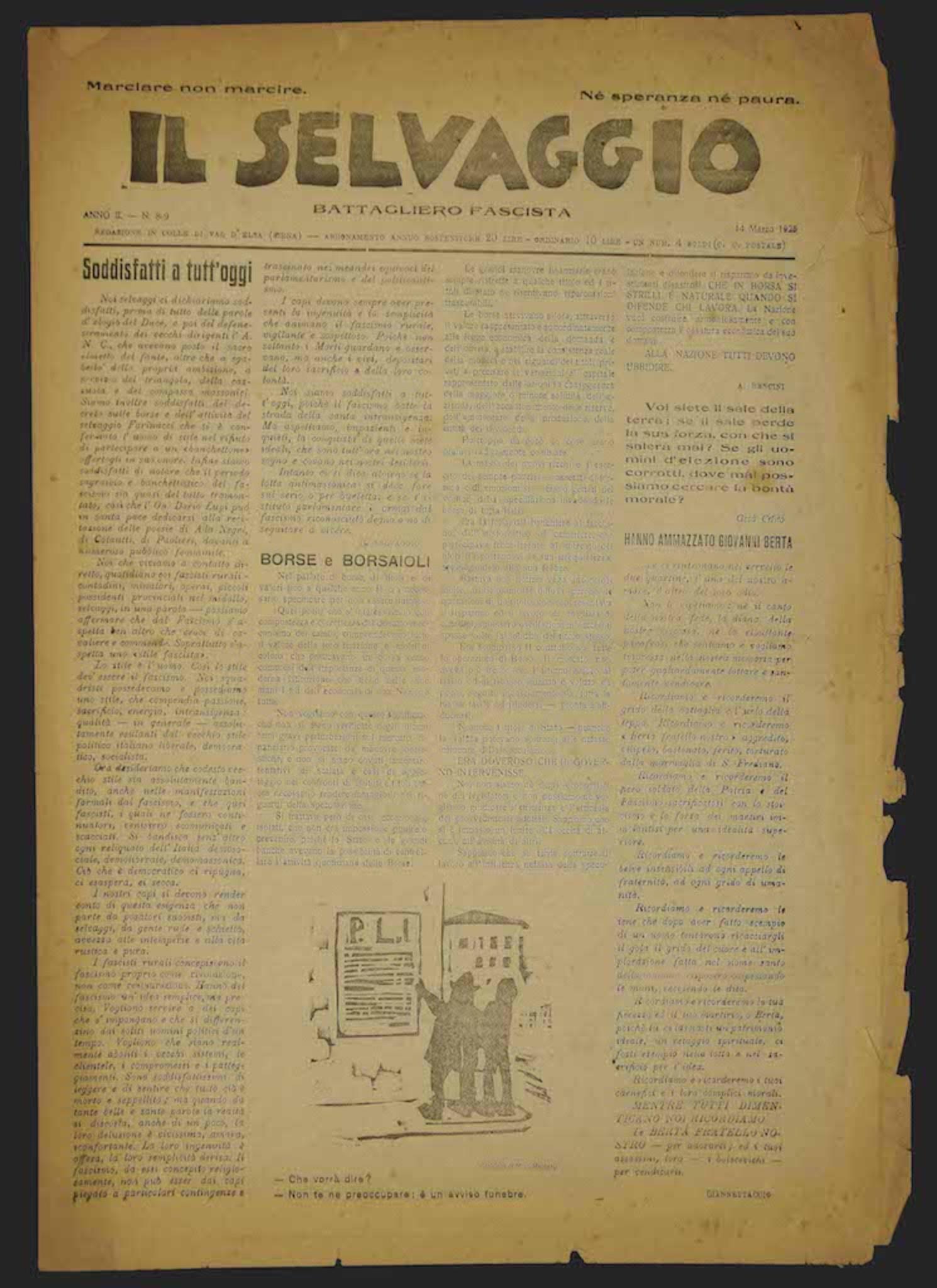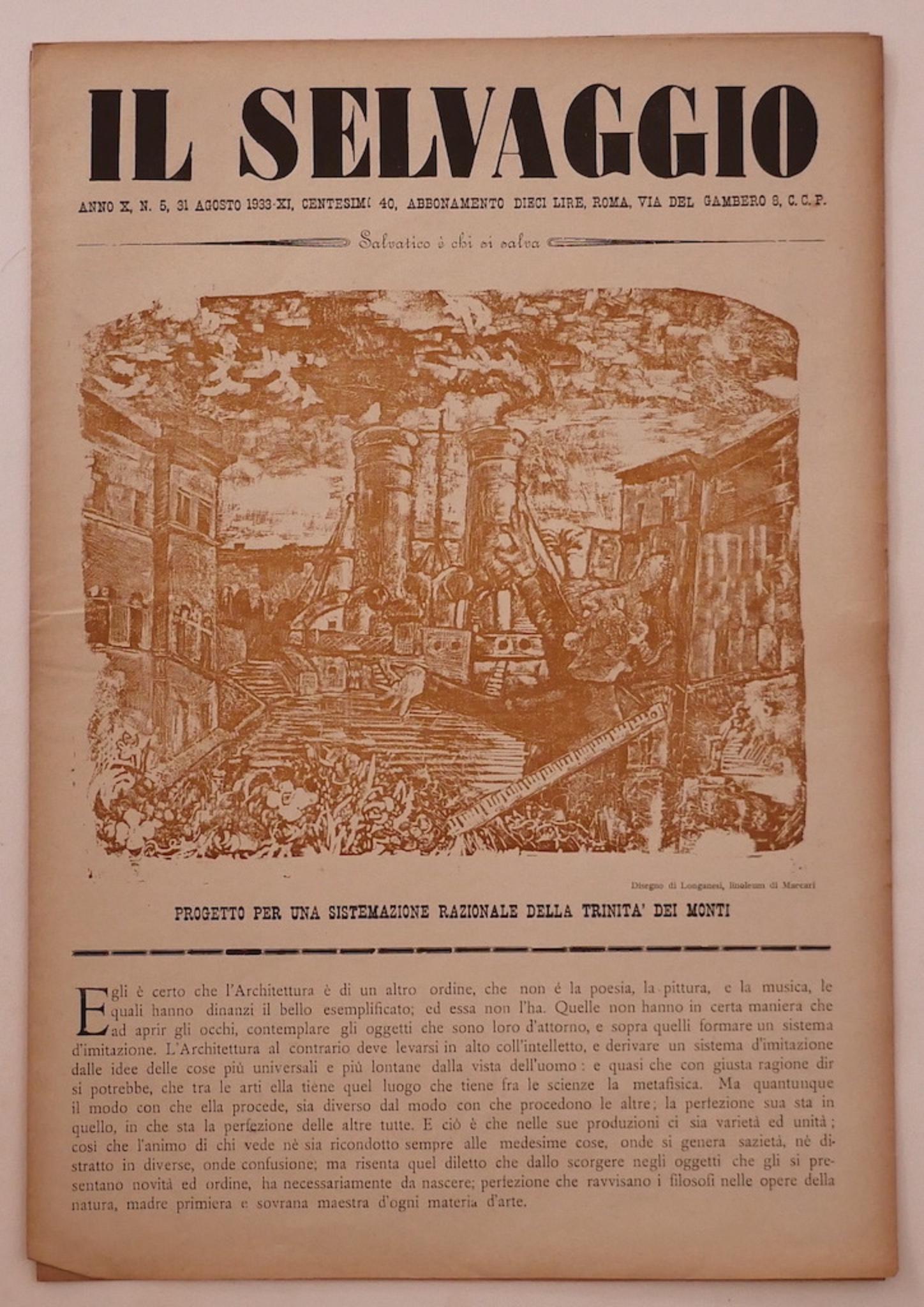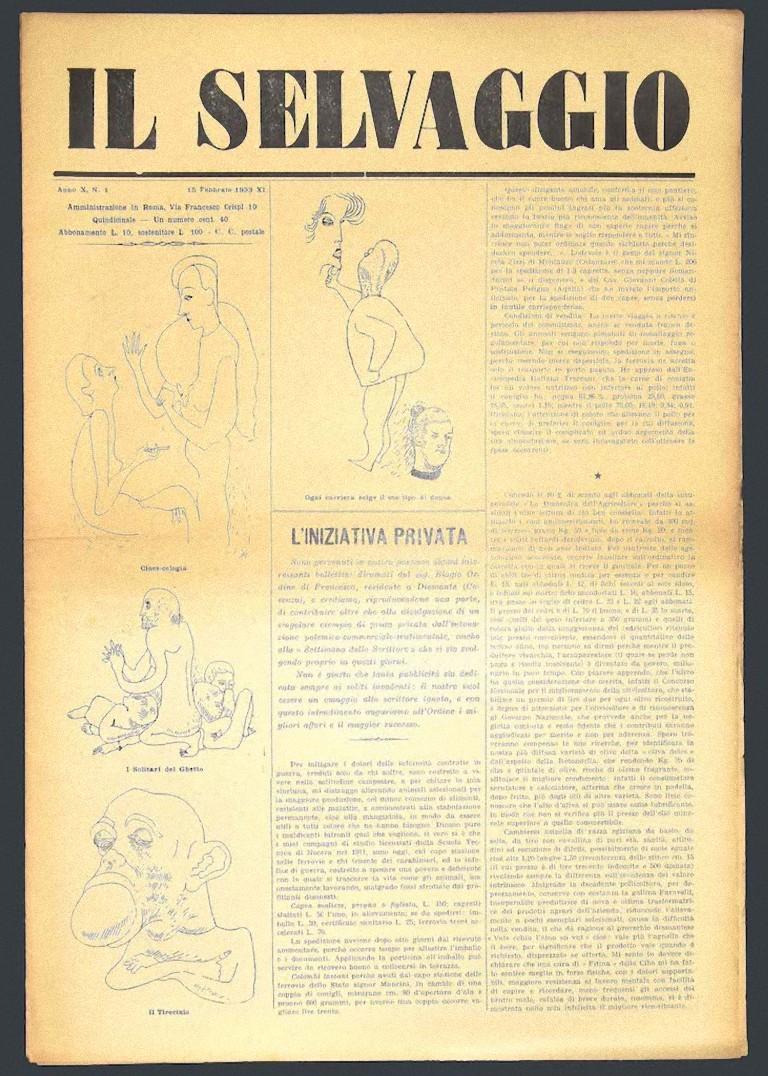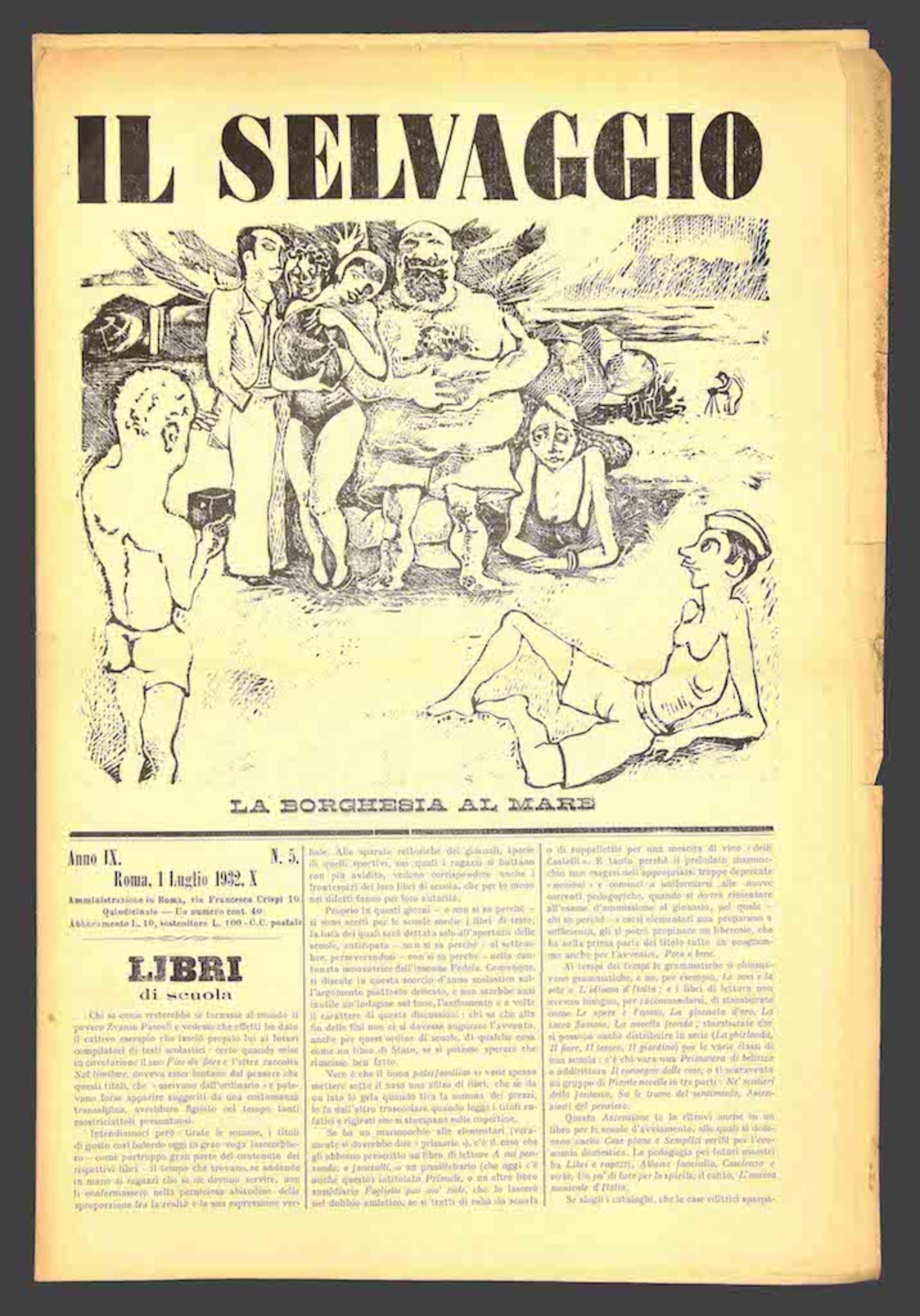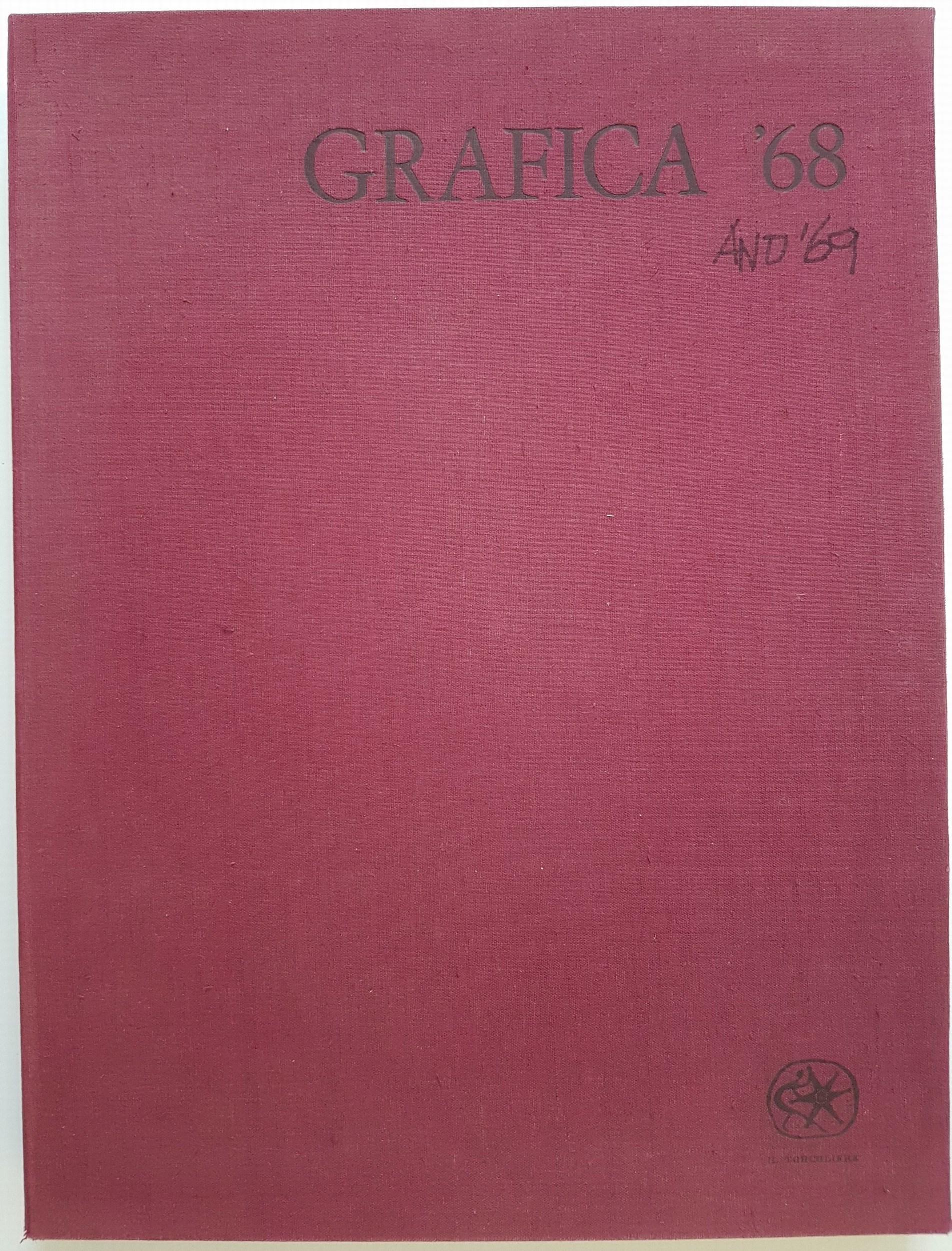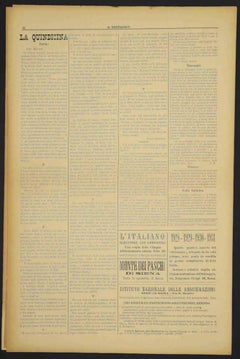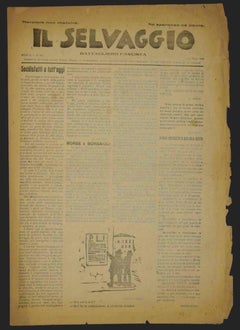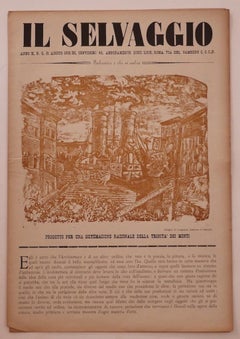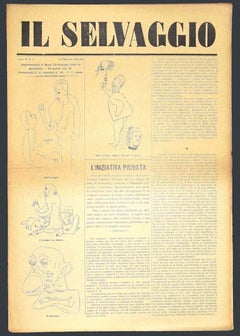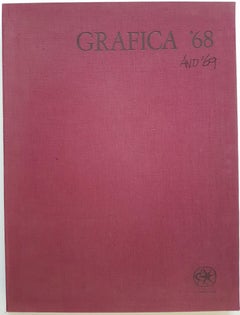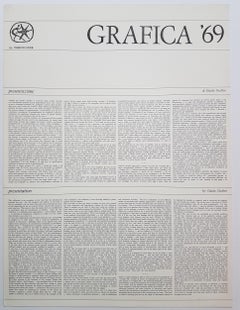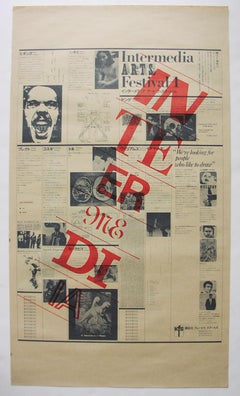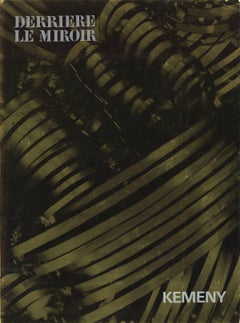Items Similar to Lacerba - Complete Collection - 69 issues
Want more images or videos?
Request additional images or videos from the seller
1 of 5
UnknownLacerba - Complete Collection - 69 issues1913, 1914, 1915
1913, 1914, 1915
$11,834.84
£8,998.98
€10,000
CA$16,605.57
A$18,145.02
CHF 9,406.98
MX$216,768.08
NOK 119,709.59
SEK 112,076.55
DKK 76,165.50
About the Item
Original Magazine. Florence, (Printers: Tip. A. Vallecchi), Jan 1913-May 1915, 4°, (h. I: 350x250 mm: aa, II-III 370x270mm) 16 pp. per issue (8 in y. III) numbered progressively by year.
Complete collection (unbound) of the 69 issues of the famous fortnightly review (weekly in 1915) edited by Papini and Soffici.
Lacerba was an Italian literary review (fortnightly at first, then weekly) started by Giovanni Papini and Ardengo Soffici in 1913 In Florence. The title is taken from a 14th Century poem, Lacerba, by Cecco d’Ascoli, as well as the line, “Quinonsicantaal mondodellerane” (“Here we don’t sing to the world of frogs”), used as a slogan printed below the masthead. Many of the most famous futurists contributed to thereview,so that it became the principal vehicle for futurist ideas and graphics between 1913 and 1914. “The intensity of its presence, its luck and the range of its coverage, its polemical tone as well as the richness and scattershot breadth of its subject matter, its language and themes, and its articles and pictures, place it among Europe’s leading avant-garde publications alongside France’s Les Soirées de Paris, Germany’s Der Sturm and Blaue Reiter almanac, and Britain’s Blast,” (Del Puppo, Lacerba 1913-1915, p. 9).
The personality and European outlook of the review emerge clearly from its publication of illustrations byArchipeko,Lariovov, Picasso; and of texts by Ford, Jacob and Apollinaire. Towards the end of 1914, the reviews columns widely reflected Italy’s prevalent interventionist mood. At the same time, the deep differences between the pro-Lacerba and pro-Marinetti factions exploded into open debate in the pages of the review, culminating in a blistering editorial, Futurism andMarinettism(III. 7, 14 Feb. ‘15).
In 1915, Lacerba became an anti-Futurist (or rather, an anti-Marinetti) publication. However, it remained violently interventionist, while still maintaining the quality and variety of its editorial content, which included Ungaretti’s first forays into newsprint.Lacerba’sdesign was based on the classical Italian layout for magazines, with pages divided into several columns. But, in addition, Lacerba ran etching as well as musical scores over the entire page. “The graphics of the masthead, designed by Ardengo Soffici, changed every year: in 1913 hand-crafted,brown-colouredlettering was used; in 1914 switched to larger, black type; and finally in 1915 the masthead was printed in a red, stencil-like, typeface” (Salaris, Riviste. p. 372). The collection is in excellent conditions and it is rare to find such an unbound set of such quality.
Number : Complete collection (69 issues)
Periodicity : fortnightly, then weekly
B/W - Col : Black/White
Illustrated : Yes
This artwork is shipped from Italy. Under existing legislation, any artwork in Italy created over 70 years ago by an artist who has died requires a licence for export regardless of the work’s market price. The shipping may require additional handling days to require the licence according to the final destination of the artwork.
- Creation Year:1913, 1914, 1915
- Dimensions:Height: 14.57 in (37 cm)Width: 10.63 in (27 cm)Depth: 2.17 in (5.5 cm)
- Medium:
- Movement & Style:
- Period:
- Condition:Insurance may be requested by customers as additional service, contact us for more information.
- Gallery Location:Roma, IT
- Reference Number:Seller: J-281301stDibs: LU65033372763
About the Seller
4.9
Platinum Seller
Premium sellers with a 4.7+ rating and 24-hour response times
1stDibs seller since 2017
7,810 sales on 1stDibs
Typical response time: 1 hour
- ShippingRetrieving quote...Shipping from: Roma, Italy
- Return Policy
More From This Seller
View AllIl Selvaggio no.6 by Mino Maccari - 1932
By Mino Maccari
Located in Roma, IT
"Il Selvaggio, no.6 1932", "Annual supporter subscription - Una copia 40 Cent - Fortnightly Newspaper letters arts and sciences", including original woodcuts by the artist Mino Macca...
Category
1930s Modern More Art
Materials
Magazine Paper
Il Selvaggio no.8/9 by Mino Maccari - 1925
By Mino Maccari
Located in Roma, IT
"Il Selvaggio, no.8-9- 1925", "Annual supporter subscription - Fortnightly Newspaper of arts and science", including original woodcuts by the artist Mino Maccari. 8 pages.
Good con...
Category
1920s Modern More Art
Materials
Magazine Paper
Il Selvaggio no.5 by Mino Maccari - 1933
By Mino Maccari
Located in Roma, IT
"Il Selvaggio, no.5- 1933", "Annual supporter subscription - Una copia 40 Cent - Weekly Newspaper letters arts and sciences", including original woodcuts by the artist Mino Maccari. ...
Category
1930s Modern More Art
Materials
Magazine Paper
Il Selvaggio #1 - Art Magazine with Original Woodcuts by Mino Maccari - 1933
By Mino Maccari
Located in Roma, IT
"Il Selvaggio, no.1- 1933", "Annual supporter subscription - Una copia 40 Cent - Fortnightly Newspaper letters arts and sciences", original woodcut prints by the artist Mino Maccari....
Category
1930s Modern More Art
Materials
Woodcut
Il Selvaggio no.5 by Mino Maccari - 1932
By Mino Maccari
Located in Roma, IT
"Il Selvaggio, no.5 - 1932", "Annual supporter subscription - Una copia 40 Cent - Weekly Newspaper letters arts and sciences", with original woodcuts by the artist Mino Maccari. 4 pa...
Category
1930s Modern More Art
Materials
Magazine Paper
Artistes italiens contemporains - Rare Book - 1927
Located in Roma, IT
V.A., Artistes Italiens contemporains, Stabilimento grafico Foa, Torin, 1927.
Vol in 8°, pp. 209, cm 25x1.5x22. In French.
Catalogue of the "Exposition d'Artistes Italians Contemporaines", Musée Rath, Genève, February 1927.
Vary rare and interesting volume on the artists who joined the exhibition: Felice Carena, Carlo Carrà, Felice Casorati, Gigi Chessa, Ernesto de Fiori, Achille Funi, Nicola Galante, Pietro Marussig, Francesco Menzio...
Category
1920s Modern More Art
Materials
Paper
You May Also Like
(Partial) Portfolio containing 3 (three) lithographs and etchings
By Grafica
Located in Kansas City, MO
Grafica '68
(Partial) Portfolio containing 3 (three) lithographs and etchings
Originally issued with 10 Lithographs, Silk Screens and Etchings, of which 7 (seven) are missing
Year: 1968
Edition: 100
Size: 17.6 x 23.6 in. or 23.6 x 17.6 in.
Publisher: Il Torcoliere, Rome - Italy
Signatures:
Sheets signed and numbered by hand
Comes with folio box and individual artists' presentation sheets.
---------------------------------
Artists works included:
RENZO VESPIGNANI
"Report on the artist"
Year: 1968
Medium: Lithograph in two colors
Edition: 100
Size: 17.6 x 23.6 in.
Publisher: Il Torcoliere, Rome - Italy
Signed and numbered
Ref: RVE_1909_01
LUCIANO DE VITA
"Le cavalier inconnu"
Year: 1968
Medium: Etching
Edition: 100
Size: 23.6 x 17.6 in.
Publisher: Il Torcoliere, Rome - Italy
Signed and numbered
Ref: LDV_1909_01
PIERO GUCCIONE
"Images"
Year: 1968
Medium: Lithograph in four colors
Edition: 100
Size: 23.6 x 17.6 in.
Publisher: Il Torcoliere, Rome - Italy
Signed and numbered
Ref: PGU_1909_01
=======================
Renzo Vespignani was an Italian painter, printmaker and illustrator. Vespignani illustrated the works of Boccaccio, Kafka and T. S. Eliot, among others. In 1956, he co-founded the magazine Citta Aperta and in 1963, co-founded the group II Pro e II Contro for neorealism in figure art.
----------------
Luciano De Vita ( Ancona , 1929 - 1992 ) was an Italian painter , engraver , set designer and lecturer .
Born in Ancona, De vita arrived in Bologna in the first post-war period, after having actively participated in the Second World War and having suffered the dramatic consequences. He attended the Academy of Fine Arts and was a pupil of Giorgio Morandi.
From 1962 he taught in Milan at the Brera Academy , while in 1975 he returned to Bologna where he obtained the same chair of engraving that had been Morandi's from 1930 to 1956 .
De Vita also actively dedicated himself to the theater , overseeing sets and costumes for shows that were also staged at La Scala in Milan. An example is the Turandot curated by Raoul Grassilli.
----------------
Emilio Vedova (9 August 1919 – 25 October 2006) was a modern Italian painter...
Category
1960s Modern Figurative Prints
Materials
Etching, Lithograph, Screen
(Partial) Portfolio containing 3 lithographs & etchings (~60% OFF LIMITED TIME)
By Grafica
Located in Kansas City, MO
Grafica '69
(Partial) Portfolio containing 3 (three) lithographs and etchings
Originally issued with 10 Lithographs and Etchings, of which 7 (seven) are missing
Year: 1969
Edition: 100
Size: 17.6 x 23.6 in. or 23.6 x 17.6 in.
Publisher: Il Torcoliere, Rome - Italy
Signatures:
Sheets signed and numbered by hand
Comes without folio box but with Presentation Sheet written by Guido Giuffre as well as individual artists' presentation sheets.
---------------------------------
Artists works included:
GIUSEPPE GUERRESCHI...
Category
1960s Modern Prints and Multiples
Materials
Lithograph, Etching
Fluxus
Located in New York, NY
FLUXUS POSTER.
Intermedia Art Festival. Tokyo, January 1969. Offset. Conceived by de Sugihura and the prestigious artists of "The Map" by Kawada, Barakei, Hosoe and Saint Marco of Narahara.
The Festival was organized by Kosurgi and Chiomi. The participating artists were Junzo, Ishiko, Tukumi Kazekara, Akimichi Takeda, Koichi Tanigawa and Li-Lan and the wonderful work of George Brecht...
Category
1960s Contemporary Abstract Prints
Materials
Offset
$2,750
'DLM No. 172'
Located in Brooklyn, NY
Derrière le Miroir (DLM) No. 172 features eight offset photographs showcasing the work of artist Kemeny. This edition highlights the unique qualities of Kemeny's artistic style, prov...
Category
1960s Contemporary Prints and Multiples
Materials
Offset
$140 Sale Price
20% Off
Catalogue
Located in Barcelona, BARCELONA
70 pages hardcover book
Category
Early 2000s More Art
Materials
Paper
1969 After Alain Le Yaouanc 'DLM No. 176 Cover' Expressionism
Located in Brooklyn, NY
Paper Size: 15 x 11 inches ( 38.1 x 27.94 cm )
Image Size: 15 x 11 inches ( 38.1 x 27.94 cm )
Framed: No
Condition: C: Several Signs of use and handling, some visible marks
Add...
Category
1960s Prints and Multiples
Materials
Lithograph
$60 Sale Price
52% Off
